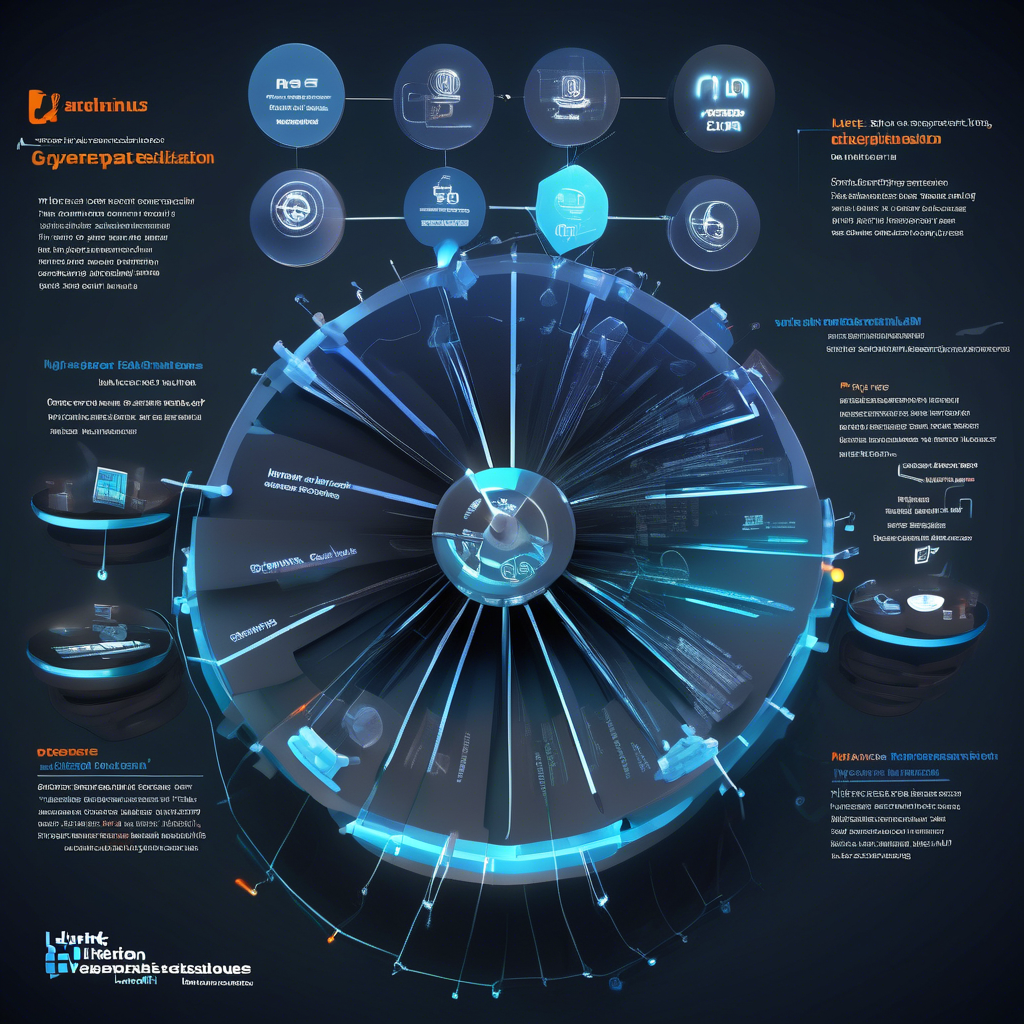
Evolution of data visualization techniques
The field of data visualization has undergone a remarkable transformation over the past few decades, driven by advancements in technology and the ever-increasing volume of data generated in our digital world. From simple bar charts and pie graphs to complex, interactive 3D representations, the evolution of visualization techniques has revolutionized how we analyze and interpret data.
In the early days of data analysis, researchers and analysts relied primarily on static, two-dimensional representations of information. These included basic line graphs, scatter plots, and histograms. While effective for simple datasets, these traditional methods quickly became inadequate as the complexity and scale of data grew exponentially.
The advent of computer technology in the mid-20th century marked a significant turning point in data visualization. With increased processing power and graphical capabilities, researchers could now create more sophisticated visual representations. This led to the development of new techniques such as heat maps, treemaps, and network diagrams, which allowed for the visualization of multidimensional data and complex relationships.
As we entered the digital age, the explosion of big data presented both challenges and opportunities for visualization techniques. The need to analyze vast amounts of information in real-time drove innovation in the field, resulting in the creation of advanced tools and methodologies. Interactive dashboards, dynamic charts, and immersive 3D visualizations emerged, enabling users to explore data from multiple perspectives and uncover hidden patterns and trends.
Today, cutting-edge visualization techniques like link maps and cyberspace-like displays are pushing the boundaries of data representation even further. These advanced methods allow analysts to navigate complex datasets in intuitive and engaging ways, facilitating deeper insights and more informed decision-making. Systems like Maxus and Metaphor Mixer exemplify this new era of data visualization, offering powerful tools for exploring and understanding the intricate relationships within large-scale datasets.
Here's a detailed Section 2 for the article with the requested sub-heading and guidelines:
Link maps and their role in data analysis
Link maps have emerged as a powerful tool in the field of data analysis, offering a unique approach to visualizing complex relationships and interconnections within large datasets. These advanced visualization techniques go beyond traditional graphs and charts, providing analysts with a more intuitive and comprehensive view of data structures and patterns.
At their core, link maps use nodes and edges to represent entities and their relationships. Nodes typically represent individual data points or concepts, while edges illustrate the connections between them. This structure allows for the representation of multifaceted relationships, making link maps particularly useful for analyzing social networks, organizational structures, and complex systems.
"Link maps are not just visualizations; they are cognitive tools that extend our ability to perceive and understand complex relationships in data." - Dr. Manuel Lima, data visualization expert
One of the key advantages of link maps is their ability to reveal hidden patterns and clusters within data. By visually representing connections, analysts can quickly identify key influencers, bottlenecks, or anomalies that might not be apparent in traditional data representations. This makes link maps invaluable in fields such as fraud detection, supply chain optimization, and scientific research.
Moreover, modern link map tools often incorporate interactive features, allowing users to zoom, filter, and explore the data dynamically. This interactivity enables analysts to dive deep into specific areas of interest, uncovering insights that might otherwise remain hidden. Advanced algorithms can also be applied to link maps to perform tasks such as community detection, path analysis, and centrality measures, further enhancing their analytical capabilities.
As data complexity continues to grow, link maps are likely to play an increasingly important role in data analysis across various industries. Their ability to simplify the visualization of intricate relationships while maintaining the richness of information makes them an indispensable tool in the modern data analyst's toolkit.
Here's a detailed Section 3 for the article as requested:
Exploring cyberspace-like displays for complex data
As data complexity continues to grow, traditional visualization methods often fall short in representing intricate relationships and multidimensional information. This limitation has led to the development of innovative, immersive visualization techniques that draw inspiration from the concept of cyberspace. These advanced displays offer analysts a more intuitive and engaging way to explore and interact with complex datasets.
Cyberspace-like displays, such as those employed in Maxus systems and Metaphor Mixer, create virtual environments where data is represented as three-dimensional objects or landscapes. This approach allows users to navigate through the data as if they were exploring a digital world, providing a more natural and intuitive interaction with complex information structures.
One of the key advantages of cyberspace-like displays is their ability to represent multiple dimensions of data simultaneously. Unlike traditional 2D visualizations, these immersive environments can utilize spatial relationships, color, size, and even movement to convey various aspects of the data. This multidimensional representation enables analysts to perceive patterns and connections that might be obscured in conventional visualizations.
Metaphor Mixer, for example, uses abstract visual metaphors to represent data relationships. By mapping data attributes to visual elements like shapes, textures, and behaviors, it creates a rich, interactive environment that analysts can explore and manipulate. This approach not only makes complex data more accessible but also leverages human cognitive abilities to recognize patterns and anomalies more effectively.
Moreover, cyberspace-like displays often incorporate advanced interaction techniques, such as virtual reality (VR) and augmented reality (AR). These technologies further enhance the immersive experience, allowing users to physically move through the data space, manipulate objects, and gain new perspectives on the information. This level of engagement can lead to deeper insights and more intuitive understanding of complex data relationships.
As these advanced visualization techniques continue to evolve, they are finding applications across various fields, from financial analysis and scientific research to urban planning and cybersecurity. The ability to represent vast amounts of data in a visually compelling and interactive manner is proving invaluable for decision-makers and analysts dealing with increasingly complex information ecosystems.
Here's a detailed Section 4 for the article as requested:
The impact of Maxus systems on data visualization
Maxus systems represent a significant leap forward in the field of data visualization, offering a powerful and innovative approach to analyzing complex datasets. These advanced systems combine cutting-edge technology with intuitive design to create immersive, interactive environments that allow users to explore and manipulate data in ways previously unimaginable.
At the core of Maxus systems is their ability to transform abstract data into tangible, three-dimensional representations. Unlike traditional visualization tools, Maxus creates virtual landscapes where data points become objects that users can interact with directly. This approach leverages the human brain's natural ability to process spatial information, making it easier for analysts to identify patterns, anomalies, and relationships within large datasets.
One of the key advantages of Maxus systems is their scalability. As datasets grow increasingly large and complex, traditional visualization methods often struggle to provide meaningful insights. Maxus, however, thrives on complexity. Its advanced algorithms can handle massive amounts of data, organizing and presenting information in a way that remains coherent and navigable, even at scale.
The interactive nature of Maxus systems also sets them apart from conventional visualization tools. Users can manipulate the data environment in real-time, zooming in on areas of interest, filtering out irrelevant information, and even altering the visualization parameters to gain new perspectives. This level of interactivity not only enhances the analytical process but also promotes a more intuitive understanding of complex data relationships.
Furthermore, Maxus systems excel in representing multidimensional data. While traditional visualizations are often limited to two or three dimensions, Maxus can incorporate multiple data attributes into its virtual environments. Color, size, shape, position, and even movement can all be used to represent different aspects of the data, allowing for a more comprehensive and nuanced analysis.
The impact of Maxus systems extends beyond just data analysis. These advanced visualization tools are also changing the way organizations communicate complex information. By creating visually engaging and interactive presentations of data, Maxus helps bridge the gap between technical analysts and non-technical stakeholders, facilitating better decision-making across all levels of an organization.
As Maxus systems continue to evolve, their potential applications are expanding rapidly. From financial modeling and scientific research to urban planning and cybersecurity, these advanced visualization tools are finding uses in diverse fields. Their ability to make complex data more accessible and understandable is proving invaluable in an era where data-driven decision-making is becoming increasingly critical.
Here's a detailed Section 5 for the article as requested:
Metaphor Mixer: A new frontier in data representation
Metaphor Mixer represents a groundbreaking approach to data visualization, pushing the boundaries of how we perceive and interact with complex information. This innovative system leverages the power of visual metaphors to transform abstract data into tangible, intuitive representations that analysts can explore and manipulate with unprecedented ease.
At its core, Metaphor Mixer operates on the principle that human cognition is deeply rooted in metaphorical thinking. By mapping data attributes to familiar visual and conceptual metaphors, it creates a bridge between abstract information and our innate ability to understand and navigate physical spaces. This approach not only makes complex data more accessible but also taps into our cognitive strengths, enabling more intuitive insights and discoveries.
One of the key strengths of Metaphor Mixer is its flexibility in representation. Unlike traditional visualization tools that often use fixed visual elements, Metaphor Mixer can adapt its metaphors to suit the specific nature of the data and the analytical goals. For instance, a financial dataset might be represented as a landscape where mountains represent high-value assets and valleys indicate liabilities. In contrast, a social network analysis might use a celestial metaphor, with stars representing individuals and constellations showing community clusters.
The interactive nature of Metaphor Mixer further enhances its analytical power. Users can manipulate the metaphorical landscape in real-time, zooming in on areas of interest, adjusting parameters to reveal hidden relationships, or even switching between different metaphorical representations to gain new perspectives on the same dataset. This level of interactivity promotes a more exploratory and creative approach to data analysis, often leading to unexpected insights.
Moreover, Metaphor Mixer excels in handling multidimensional data. By utilizing various aspects of its metaphorical representations – such as color, size, texture, and movement – it can effectively convey multiple data attributes simultaneously. This capability is particularly valuable when dealing with complex datasets that traditional visualization methods struggle to represent coherently.
The impact of Metaphor Mixer extends beyond just improving data analysis. It also serves as a powerful communication tool, bridging the gap between data specialists and non-technical stakeholders. By presenting complex information in visually engaging and intuitive formats, Metaphor Mixer facilitates better understanding and more informed decision-making across all levels of an organization.
As Metaphor Mixer continues to evolve, its potential applications are expanding rapidly. From scientific research and business intelligence to education and public policy, this innovative system is finding uses in diverse fields. Its ability to make complex data more accessible, engaging, and understandable is proving invaluable in an era where data-driven insights are increasingly crucial for success.




